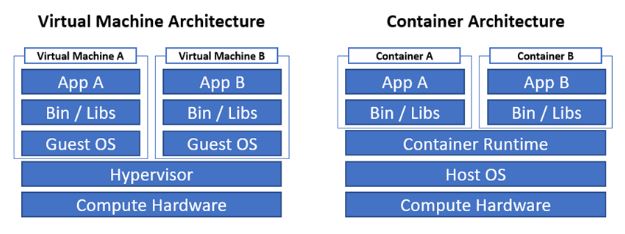Industrial Automation
How to Match Industrial Edge Applications to Your Business Goals
09.08.2022
Editor’s Note: This blog is a continuation of our industrial edge blog series. In our first blog, we discussed IIoT and the value of collecting data. In the second blog, we discussed industrial edge solutions. In our third blog, we examined how industrial edge solutions can be applied to specific use cases. Our fourth blog offers tips on selecting the right industrial edge compute device for your application. Here, we discuss the importance of industrial edge applications.
With the substantial growth of intelligent edge devices in today’s industrial environments—and the amount of data these devices generate from day to day, and even hour to hour—it’s no surprise that industrial edge computing is being incorporated into plant operations.
Industrial edge computing processes data closer to the source instead of in a centralized location, which translates to benefits like lower latency, productivity improvements and enhanced quality.
Deloitte reports that 45% of manufacturing executives expect further increases in operational efficiency in the next year from investments in Industry 4.0 and industrial Internet of Things (IIoT), such as edge computing, that help connect machines and automate processes.
The Importance of Hardware-Agnostic Edge Applications
Hardware-agnostic industrial edge applications don’t require reliance on a specific hardware or platform in order to function. They allow you to support any type of edge application with any type of hardware. These applications share three key traits:
-
They can run on a general-purpose operating system (GPOS) like Windows or Linux.
- They can be installed on commercial off-the-shelf (COTS) hardware. For example, a PLC program that only runs on hardware from a specific PLC vendor isn’t a hardware agnostic application. An HMI application that runs on any brand of industrial PC is considered a hardware-agnostic application.
- They can be deployed as virtual machines or containers. Both options isolate multiple applications that run on a shared hardware platform so they don’t compete for resources or cause compatibility issues. Because each virtual machine includes a full operating system while containers only include necessary bins/libs (as pictured below), virtual machines tend to require more compute resources to run than containers.
According to the latest Microsoft IoT Signals: Manufacturing Spotlight research, the share of applications that operate on industrial PCs or gateways running in containers is expected to jump to 35% over the next three years (+11% from today’s number of 24%).
The Role of Industrial Edge Applications
Industrial edge applications are designed to address common use cases in industrial environments.
To illustrate some examples, we defined seven types of common edge applications and examples in the table below.
Types of Industrial Edge Apps
|
|
Definition |
Examples |
1. Networking |
Applications that analyze, configure and manage industrial networks |
|
2. Ingestion |
Applications that collect, convert and/or collate industrial data (see our data ingestion blog post for more info) |
|
3. Security |
Applications that analyze, manage and/or improve the cybersecurity of industrial operations |
|
4. Control |
Applications that control industrial processes (e.g., IEC 61131-3 and 61499 software) |
|
5. Analysis |
Applications that perform simple (e.g., filters, run charts) or complex (e.g., AI/ML) analytical functions on OT data |
|
6. Visualization |
Applications that visualize OT data in either read-only (e.g., dashboards) or read/write (e.g., HMIs) formats |
|
7. Storage |
Applications that store OT data in a persistent fashion |
|
Determining Technical Requirements
Different industrial edge applications (and the specific use cases for those applications) dictate the technical requirements of the hardware that will execute the applications. For instance, a control application requires low latency and high availability, but it does not necessarily need to be scalable.
On the other hand, analytics applications don’t often require low latency or high availability because they’re usually not mission critical; however, they often need to scale up or down, depending on the type of analytics and amount of data.
Learn more about the technical requirements associated with different types of industrial edge computing hardware.
Meet Belden Horizon™, a Platform for Industrial Edge Solutions
Industrial edge applications are moving to containers, which virtualize software layers above the operating system (instead of the entire machine). As a result, industrial edge compute hardware needs to meet the technical requirements of these applications.
Belden’s industrial edge solutions help you create an infrastructure that supports your industrial edge and IIoT goals.
Our powerful new platform for industrial edge solutions, Belden Horizon™, provides a simpler, seamless, secure and reliable way to connect operational systems at the edge while maintaining security and communication with the cloud. It’s intended for orchestration at scale of the edge applications discussed in this blog.
Belden Horizon features secure remote access (SRA) and persistent data network (PDN) while adding the potential for other functions, such as edge orchestration, data monitoring and anomaly detection using short interval data. Learn more about Belden Horizon.
Our product experts are here to support you. If you want to know more about this topic, email me ([email protected]) or Matt ([email protected]).

